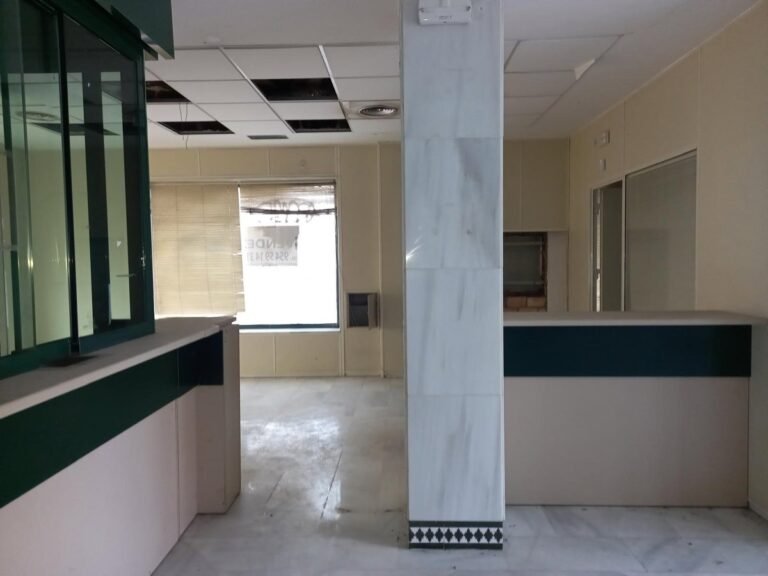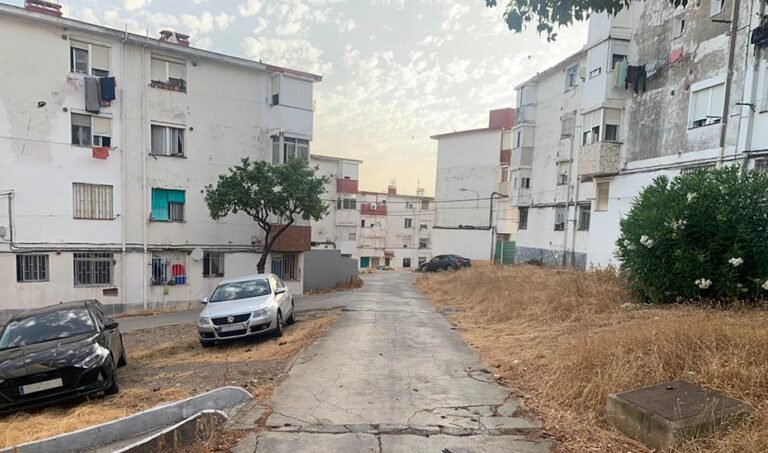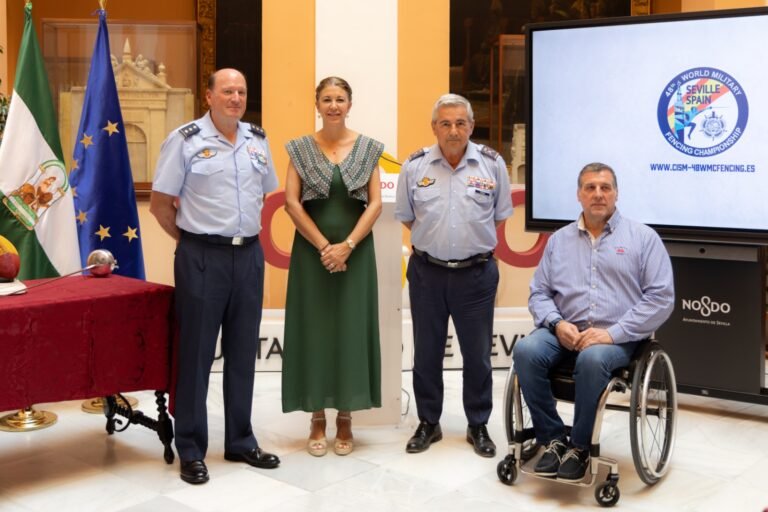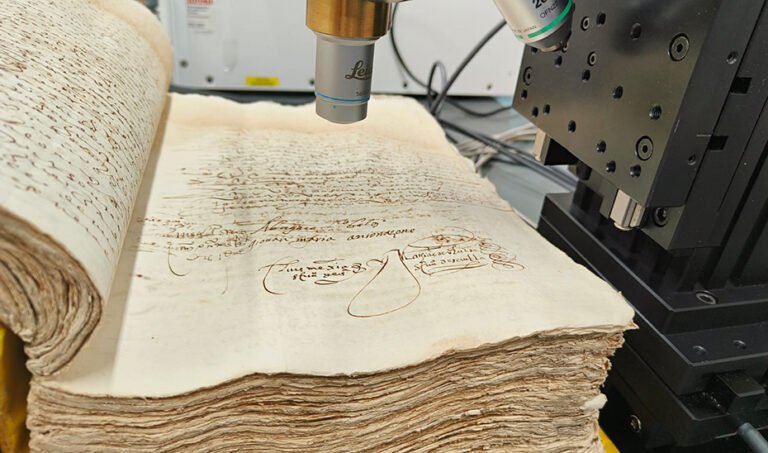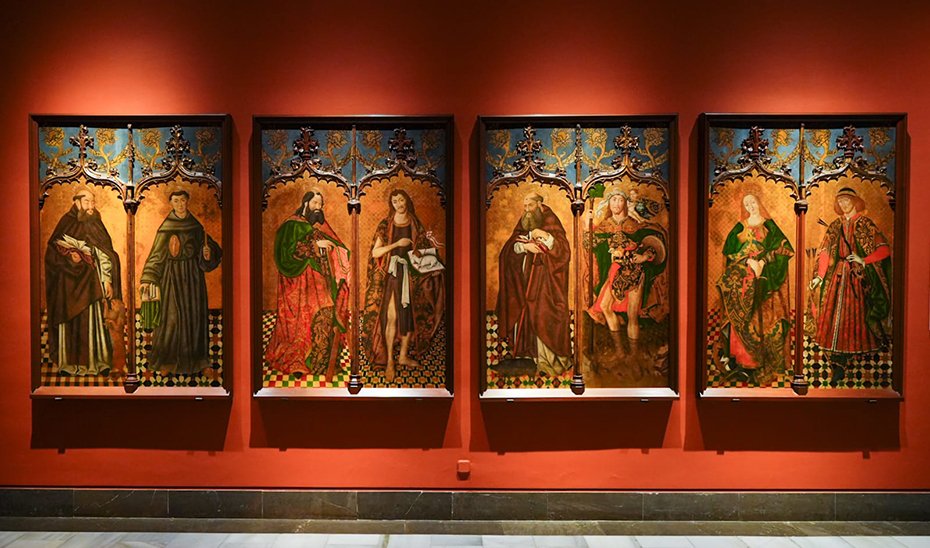
The Real Council of the Military Orders of Santiago, Calatrava, Alcántara, and Montesa has donated to the Museum of Fine Arts of Seville a set of four paintings on panel, attributed to an anonymous author close to the painter Juan Sánchez de Castro, the most important Sevillian master of the late 15th century. Dedicated to different saints presented in pairs, these panels, painted in tempera and oil and dated around 1480 and 1500, were already on display at the Museum of Fine Arts of Seville, where they had been on deposit since 1908.
Since their arrival, these paintings have been considered the most relevant in the museum’s medieval art collection for being very representative of Sevillian artistic production of this period, a circumstance compounded by the fact that the museum has a very limited pictorial collection from this period.
After the official ceremony held at the Museum of Fine Arts, led by the Deputy Minister of Culture and Sports, Macarena O’Neill, and by the President of the Real Council of the Military Orders, Pedro de Borbón Dos Sicilias and de Orleans, Duke of Calabria, this Gothic set has become the property of the museum, which has cared for, restored, studied, and exhibited it for almost 120 years.
Also in attendance at the event were the Secretary General of Cultural Innovation and Museums, José Ángel Vélez, the Director General of Museums and Cultural Sites, Aurora Villalobos, the Delegate of Tourism and Culture of the City of Seville, Angie Moreno, the Delegate of the Junta in Seville, Ricardo Sánchez, and the Director of the Sevillian art gallery, Valme Muñoz, as well as several members of the Council of Military Orders.
The Deputy Minister of Culture and Sports thanked this «exceptional donation», emphasizing that «donating a work of art is much more than an act of altruism, as it involves laying a cornerstone in the construction of a society committed to the transmission and preservation of its cultural heritage.»
This donation adds to the eight important donations made to the Museum of Fine Arts of Seville since 2021, which have allowed the incorporation of over 210 new works into its collections. Among them, the donation of Luque Cabrera, with over 190 originals, the donation of Adela Perea, composed of three oils from her grandfather, the Sevillian painter Manuel González Santos, and the recent donation of the view of the Alameda in the 18th century, made by the British Hispanist John Elliott and his wife Oonah.
The director of the Museum of Fine Arts of Seville, Valme Muñoz, the president of the Real Council of the Military Orders, Pedro Borbón Dos Sicilias and de Orleans, and the Deputy Minister of Culture and Sports, Macarena O’Neill, during the official ceremony.
The Andalusian Government has associated a strategy of acquisitions with this policy of stimulating private donations, so that, since 2019, the Ministry of Culture and Sports has purchased works for the art gallery worth over 1.5 million euros, compared to the 40,000 euros invested in acquisitions during the same period by the Ministry of Culture. Among them, highlights include the acquisition of pieces by Luisa Roldán ‘La Roldana’ (‘Virgen de la Leche’, for 275,000 euros in 2020), of Alonso Cano (‘Santa María Magdalena de Pazzi’, for 165,000 euros in 2021) and of Bartolomé Esteban Murillo (‘Santa Catalina de Alejandría’, for 1.08 million euros in 2022).
Four panels and eight saints
The four paintings on panel – depicting representations of San Antonio Abad and San Cristóbal, San Jerónimo and San Antonio de Padua, Santa Catalina and San Sebastián, and San Andrés and San Juan Bautista – were painted for the church of San Benito that the Order of Calatrava had in Seville, built after the city was conquered by Fernando III and rebuilt in 1393.
They were part of the main altarpiece of this building, which is still preserved, albeit greatly altered. In the 17th century, a reform of the building was carried out, and its decoration was renewed. As part of this process, a new main altarpiece was commissioned, and new paintings were commissioned from Juan de Valdés Leal, a Baroque ensemble that is currently located in the chapel of the Brotherhood of the Quinta Angustia, in the parish of the Magdalena.
The panels from the previous altarpiece were stored in other rooms of San Benito until the 19th century. Subsequently, they were transferred to the former Dominican convent of Montesión and, finally, in 1908, they were delivered, as a deposit, to the Museum of Fine Arts of Seville.
Chronologically, the works are placed in the final decades of the 15th century, when Sevillian pictorial art is linked to the forms of the so-called international Gothic, in which elements from both Flanders and Italy converge. The absence of San Benito, the patron of the temple, stands out in them, which can be explained by the existence of a central panel, currently lost, in which the Virgin was depicted accompanied by San Benito and San Bernardo.
The author of these panels creates very expressive faces, with rounded lines, very marked eyes, and detailed hair or wrinkles, giving the figures a melancholic appearance. Also noteworthy is the detailed treatment of the characters’ clothing, a process that extends to the ceramic tiles, reminiscent of those that existed in Seville, which the painter meticulously reproduces.
Carmen, the cigar maker
The Museum of Fine Arts of Seville, which will receive the Sevilla Medal for its work in promoting Arts and Culture, has scheduled from May 27 to 29, in a double session – at 6:00 p.m. and 7:30 p.m. – musicalized talks in front of the painting ‘Las Cigarreras’, by Gonzalo de Bilbao.
During this activity, the existing connections between the opera ‘Carmen’ and the large oil painting by the Sevillian artist will be highlighted. With the participation of a pianist, a singer, and a specialist in painting and opera, these music-infused talks have been jointly organized by the Sevillian art gallery and the Maestranza Theater to commemorate the 150th anniversary of Bizet’s opera premiere in Paris. Entry to this activity is free until full capacity is reached.

